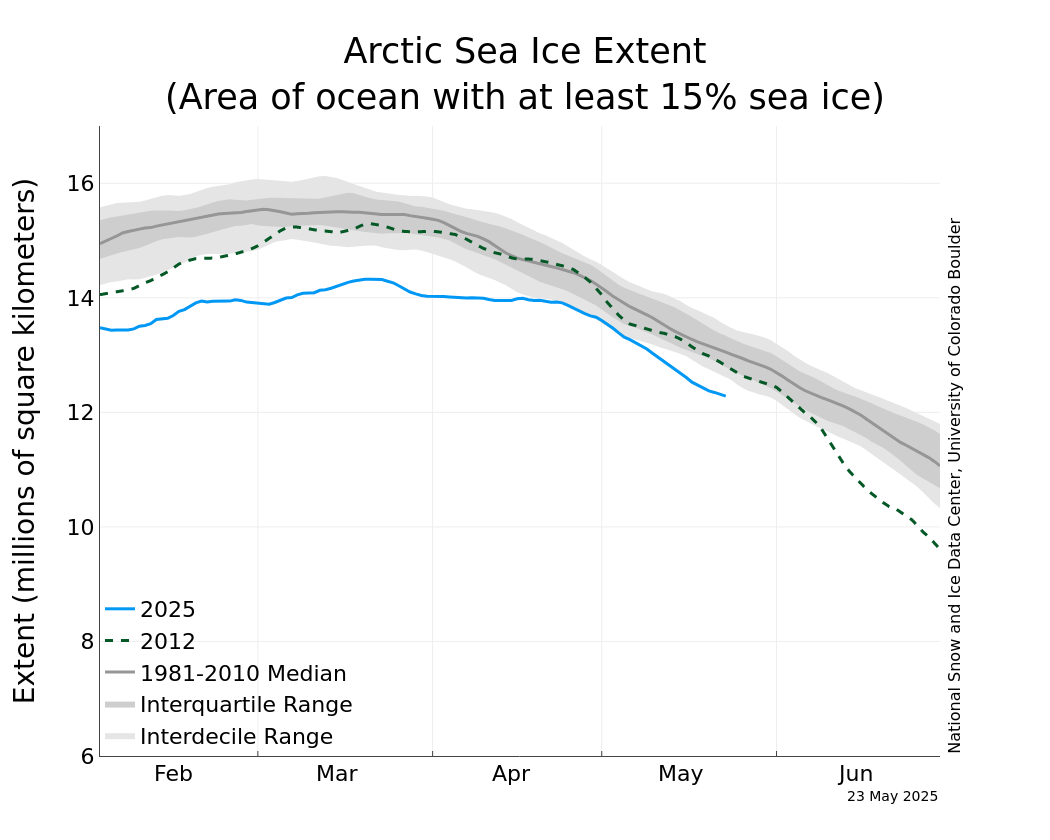Keep in mind, the Arctic SIE reaches its maximum in March; due to the thermal inertia of the icecap, the SIE lags behind solar insolation. The Arctic is still dark now, and the sun won’t reach its northernmost Declination until the Solstice in June. Minimum SIE doesn’t come until mid-September


The highlighted (dashed) time series is for 2012, the lowest September SIE since the satellite record began in 1979.